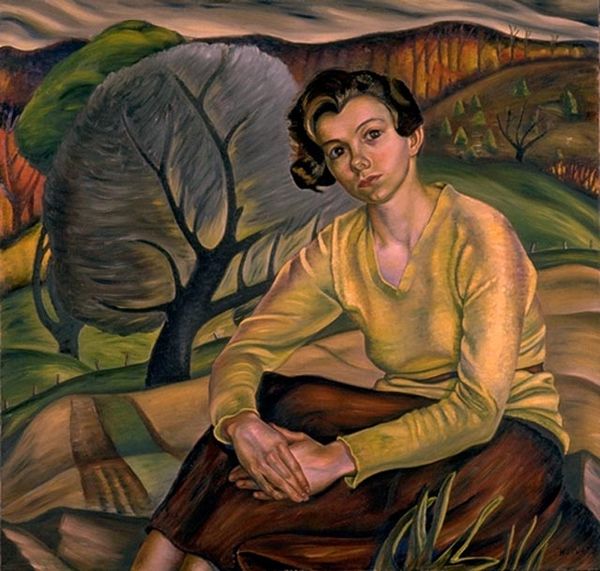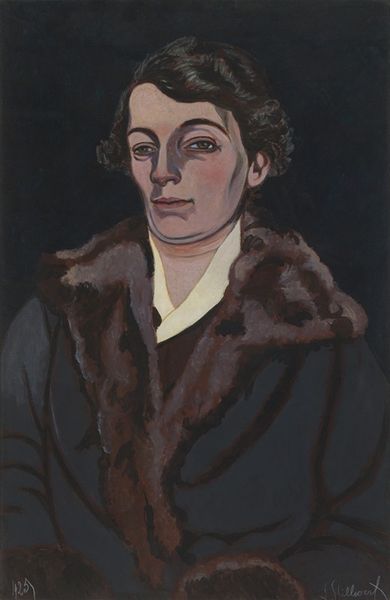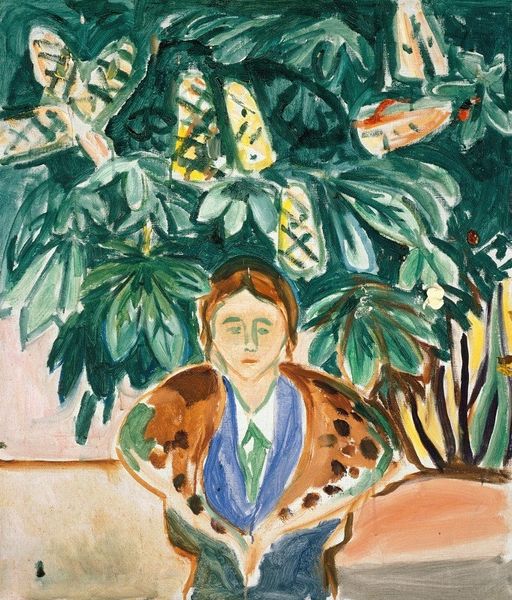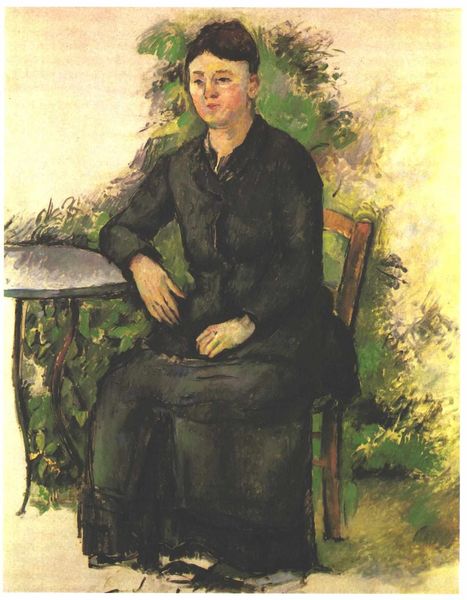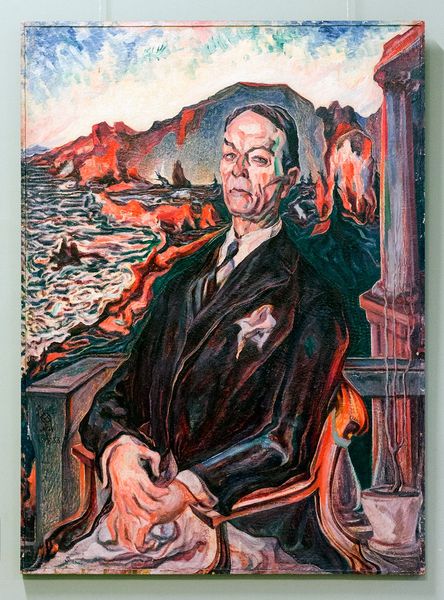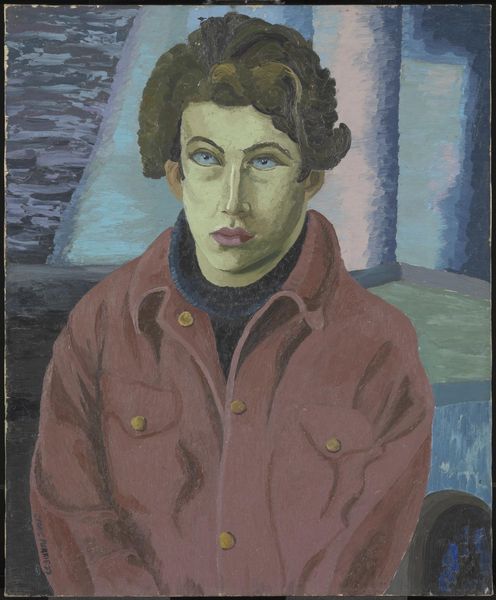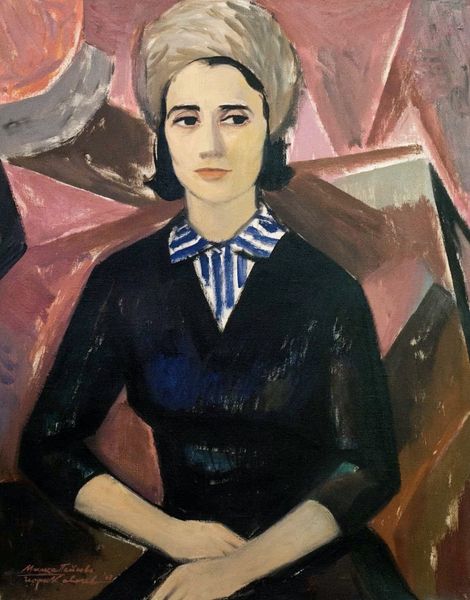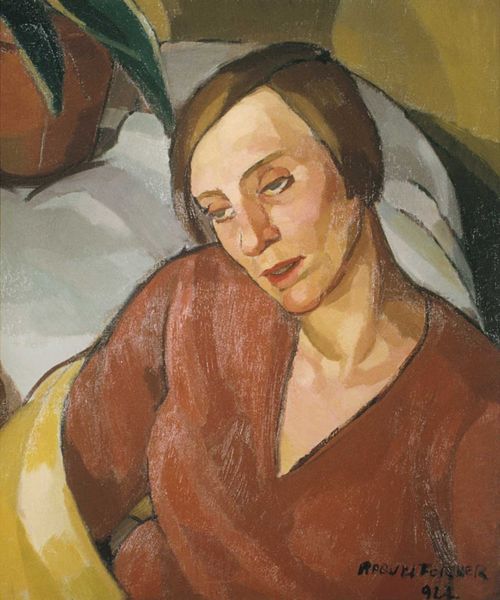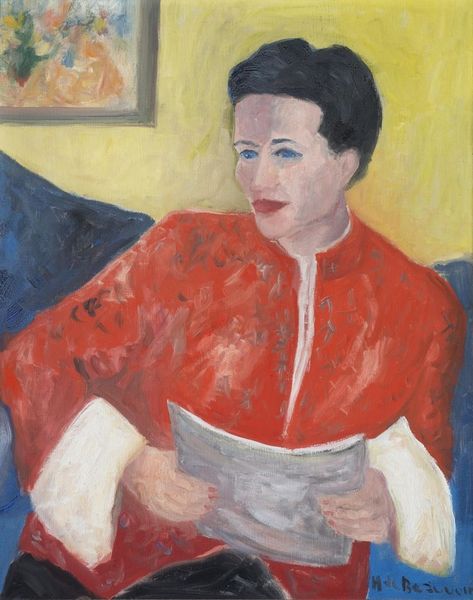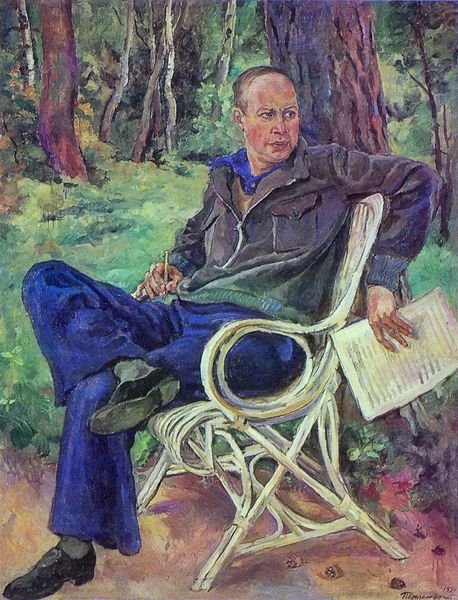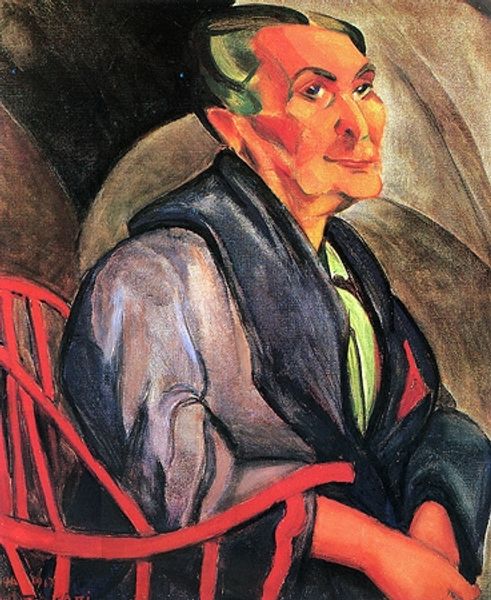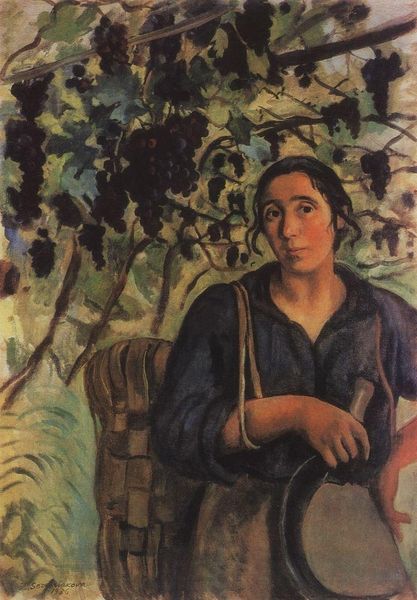
Copyright: Public Domain: Artvee
Curator: This painting, simply titled "Rolf de Maré," was created circa 1910 by Nils Dardel. It's an oil-on-canvas portrait, a wonderful example of Dardel's early figurative style. Editor: My initial reaction is one of playful defiance. The colors are bold, almost clashing, and the composition feels a little like a stage set, deliberately arranged. It exudes a fascinating theatricality. Curator: The painting immediately recalls Dardel's involvement with the Ballets Suédois, a pioneering dance company founded by Rolf de Maré himself. It's highly likely that Dardel painted this portrait as an expression of gratitude and acknowledgement. It's important to understand Dardel's association with the Ballet, which became central to his success. Editor: Right, de Maré, the subject himself, adopts a pose of confident ease, a hand resting casually on his hip. The somewhat vacant facial expression, however, intrigues me. The colors are emotionally evocative: the confident earth tones of the landscape compared with the pastels in his suiting. Is this supposed to illustrate a deep, perhaps unresolved connection to his country and landscape, here captured with naive, expressive brushstrokes? Curator: That reading is definitely viable. The symbolic background—the vivid cliffs, a fairytale house, skeletal trees—all contribute to the overall sense of romanticized longing and, dare I say, almost nationalistic sentiment that defined intellectual circles in Sweden at the time. Remember the political climate: Sweden trying to create a specific cultural identity with firm links to the past and future. Editor: Those skeletal trees have captured my attention, because on a metaphorical level they invite ideas of death, longing, memory. It's intriguing how this image plays between convention and the unexpected; while rooted in reality it also carries a feeling that it almost takes place within the theater of the subject’s mind. Curator: Precisely. In truth, Dardel occupies a unique and often misunderstood position in art history because of that exact approach. He operated on the fringes, absorbing various trends but always maintaining his own distinct vision of how portraiture could comment on much wider societal conversations. Editor: So in essence, while we might admire the confident aesthetic now, there's a real depth to Dardel's conceptual practice in those historical moments and wider art trends you’ve introduced. Curator: Absolutely. Understanding the historical context adds such depth. Editor: And it highlights the powerful potential of imagery to tell complex cultural stories.
Comments
No comments
Be the first to comment and join the conversation on the ultimate creative platform.
